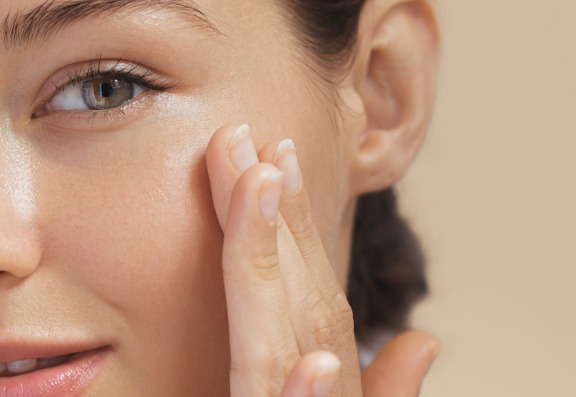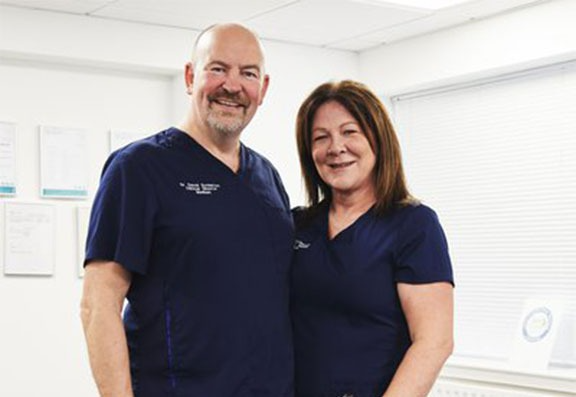If you’re keeping up with the latest aesthetics trends, you may have seen and heard about polynucleotides, commonly talked about on social media as the salmon sperm facial! This increasingly popular regenerative injectable was recently featured on This Morning and is known to be a firm favourite treatment for Hollywood star Jennifer Aniston. This revolutionary treatment has taken the aesthetic industry by storm, becoming highly favoured by medical professionals who have seen incredible results for patients with ageing concerns or skin conditions such as pigmentation and acne scarring.
Despite polynucleotides becoming one of the fastest-growing aesthetic trends in recent years, we know you may not have heard about this treatment option before so we’re here to answer some of your most common questions.
So what exactly are polynucleotides?
Polynucleotides are the building blocks of DNA, which when injected into tissues can help to kick-start regeneration in the skin. They are stretchy molecules made from fragments of DNA extracted from salmon or trout sperm which closely resemble human DNA.
Polynucleotides help to increase the quality of the fibroblasts, which are the cells which produce collagen and hyaluronic acid. Improving the quality of the fibroblasts helps to make skin cells act like they used to, they then start to behave like a younger skin would.

By injecting polynucleotides into the skin we can improve the function of the cells and increase the production of collagen and natural hyaluronic acid which results in overall skin rejuvenation and improvement. They are similar to skin boosters (e.g Profhilo) but rather than just providing hydration, they act like food or medicine to your cells, helping them to repair themselves and produce more collagen and elastin.
What is the difference between polynucleotides and dermal filler?
Dermal fillers have been a popular aesthetic treatment for many years and will always have their place within injectable skin treatments. As we age we produce less collagen, the skin becomes less elastic, thinner and we lose volume. Fillers work by adding volume to different areas of the face to achieve a more youthful, fuller appearance. Dermal fillers provide almost immediate results with visible contouring to the skin. Results can often last between 9-24 months depending on the treatment area.
Polynucleotides, on the other hand, stimulate the skin at a cellular level, aiming to regenerate the skin for overall skin rejuvenation. Unlike fillers which provide immediate results, any treatments which work at a cellular level to improve collagen production take longer to see results. It’s important not to be put off by this, improving cell function and collagen production will provide longer-term, more effective results for your overall skin quality.
Despite their differences, both treatments work well in conjunction with each other. Dermal fillers containing hyaluronic acid will give you instant volume, polynucleotides will support longer-term results by improving collagen production, skin quality and fine lines and wrinkles.

What are the benefits of polynucleotide injections?
In contrast to other injectables, polynucleotides are a versatile treatment suitable for the majority of patients. Polynucleotides can be used as a preventative treatment for overall skin health, a method for treating specific skin conditions or an effective anti-ageing treatment. This regenerative injectable treatment can be used on both the face and body, but is gaining huge popularity for effectively treating the eye area.
Polynucleotides can be used to improve many of the common signs of ageing such as crepey/sagging skin, poor texture and fine lines and wrinkles. This regenerative treatment is also beneficial for treating scarring, pigmentation, stretch marks, under eye dark circles, crepey skin around the eye area and maintaining good skin health.
What does the treatment process look like?
After an initial consultation with one of our doctors or nurses, you would begin a course of four polynucleotide treatments. We recommend treatment every 3-4 weeks for maximum results. Patients normally start to see some results after their first treatment but as the polynucleotides are targeting your cells and stimulating collagen production, full results can take around 12-16 weeks. Maintenance treatments will vary depending on your concerns and goals but we usually recommend two treatments a year to maintain optimum results.
If you want to read more, the experts at Consulting Room really know what they're talking about and have put together some pigmentation, acne, Scarring, Dermal fillers, fine lines and wrinkles, Skin texture concerns, stretch marks and under-eye dark circles treatment FAQs just for you.
If you have more questions, you can use the pigmentation, acne, Scarring, Dermal fillers, fine lines and wrinkles, Skin texture concerns, stretch marks and under-eye dark circles feature to talk to our panel of trained medical experts.
If you're keen to get started with complexion improvement treatment right away then you're in luck - those clever folks also have a list of trusted, accredited pigmentation, acne, Scarring, Dermal fillers, fine lines and wrinkles, Skin texture concerns, stretch marks and under eye dark circles in your area.
MediZen was founded in 1999 by the worldwide trainer and key opinion leader for Allergan, Dr. David Eccleston, we are the Midlands Premier Aesthetic Clinic.
Medizen provide a range of treatments covering face, skin and body all with the aim of helping you feel your most confident self.
It is our firm belief that this can only be achieved in a medically led clinic such as ours.
Our Birmingham based clinic has a wide range of facilities that allow us to offer a variety of quality treatments from laser treatment to CoolSculpting®, miraDry to skincare and lots more.
Give Medizen a call on 0121 392 8552 or visit medizen.co.uk for more information.

Baby Botox, also known as micro-Botox, is a cosmetic procedure that has gained popularity in recent years.
I would be approaching 50 soon. I am finding myself increasingly concerned how do I maintain my skin and prepare myself for when I am older...
Smoker lines are those pesky wrinkles etched around the lips and are a common concern. So what can be done about them?
Hey, wait!
Before you go.....
Let's stay in touch, pop your details here and we'll send our editor's hand-picked updates on your fave subjects.